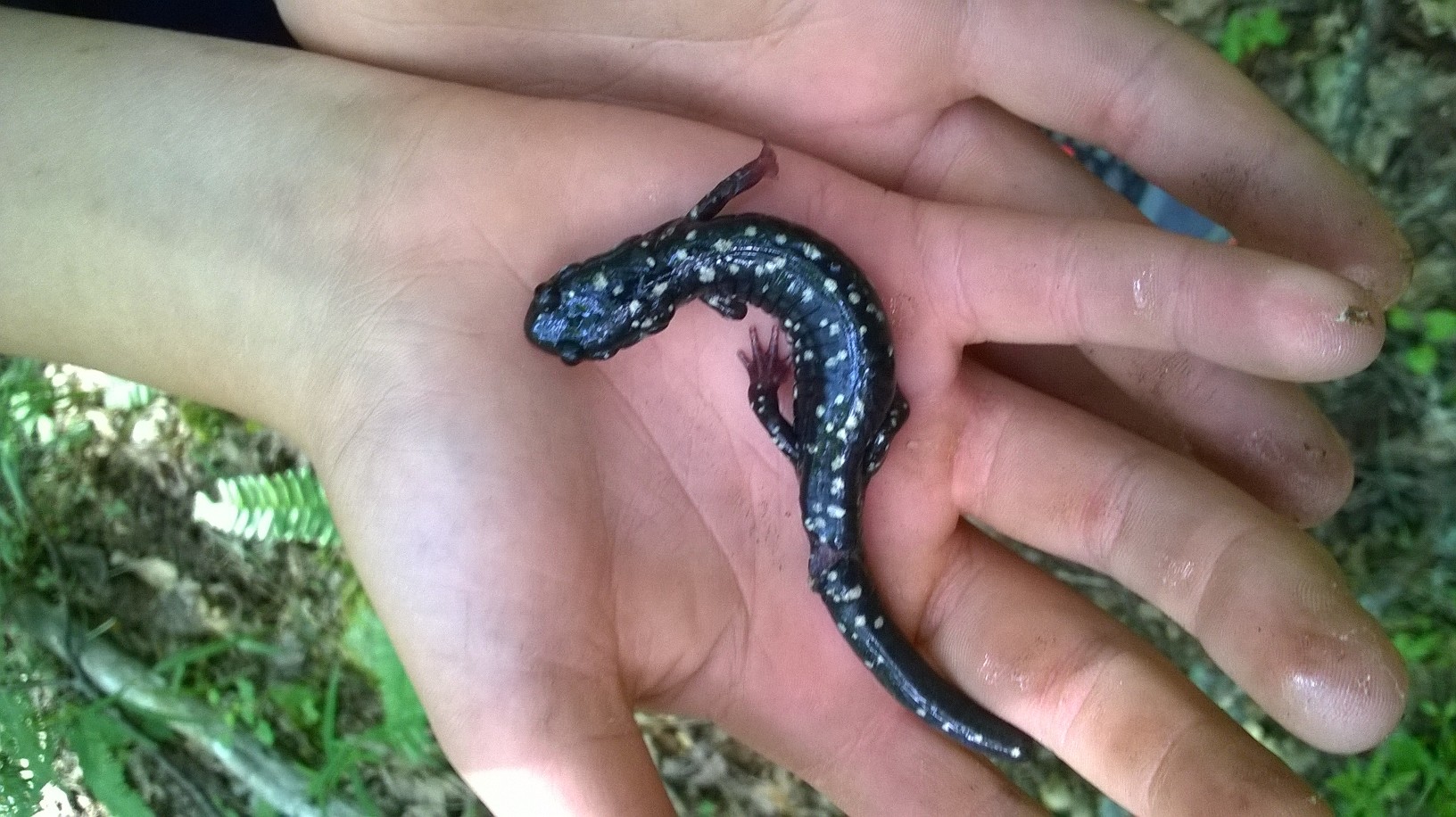|
Mountain Lake Wilderness Cluster
The Mountain Lake Wilderness Cluster is a region recognized by The Wilderness Society for its unique waterfalls, vistas, trout stream and wildlife habitat. The heart of the region is the Mountain Lake Wilderness, the largest wilderness in the George Washington and Jefferson National Forests. These public lands are enhanced by the presence of private lands which are preserved to maintain their natural integrity.Virginia's Mountain Treasures, report issued by The Wilderness Society, May, 1999 The region includes the Mountain Lake Biological Station that studies distinctive wildlife and ecology of the area. Description The Mountain Lake Wilderness Cluster contains wildlands under different levels of management. There are wilderness areas protected by Congressional action, inventoried wilderness, areas recognized by Wilderness Society as worthy of protection from timbering and roads, and other forest service land that act as a buffer for the protected areas. These areas are in ... [...More Info...] [...Related Items...] OR: [Wikipedia] [Google] [Baidu] |
The Wilderness Society (United States)
The Wilderness Society is an American non-profit land conservation organization that is dedicated to protecting natural areas and federal public lands in the United States. They advocate for the designation of federal wilderness areas and other protective designations, such as for national monuments. They support balanced uses of public lands, and advocate for federal politicians to enact various land conservation and balanced land use proposals. The Wilderness Society also engages in a number of ancillary activities, including education and outreach, and hosts one of the most valuable collections of Ansel Adams photographs at their headquarters in Washington, D.C. The Wilderness Society specializes in issues involving lands under the management of federal agencies; such lands include national parks, national forests, national wildlife refuges, and areas overseen by the Bureau of Land Management. In the early 21st century, the society has been active in fighting recent politic ... [...More Info...] [...Related Items...] OR: [Wikipedia] [Google] [Baidu] |
Cove (Appalachian Mountains)
In the central and southern Appalachian Mountains of Eastern North America, a cove is a small valley between two ridge lines that is closed at one or both ends. Among the places where the word "cove" appears in the name of an Appalachian valley are Morrison Cove in Pennsylvania; Lost Cove, North Carolina;Benjamin J. Cramer Collection Archives of Appalachia ; Doran Cove, , Ladd Cove, in or adjacent to the |
Mountain Lake Virginia Lakeview
A mountain is an elevated portion of the Earth's crust, generally with steep sides that show significant exposed bedrock. Although definitions vary, a mountain may differ from a plateau in having a limited summit area, and is usually higher than a hill, typically rising at least 300 metres (1,000 feet) above the surrounding land. A few mountains are isolated summits, but most occur in mountain ranges. Mountains are formed through tectonic forces, erosion, or volcanism, which act on time scales of up to tens of millions of years. Once mountain building ceases, mountains are slowly leveled through the action of weathering, through slumping and other forms of mass wasting, as well as through erosion by rivers and glaciers. High elevations on mountains produce colder climates than at sea level at similar latitude. These colder climates strongly affect the ecosystems of mountains: different elevations have different plants and animals. Because of the less hospitable terrain and ... [...More Info...] [...Related Items...] OR: [Wikipedia] [Google] [Baidu] |
Fossil
A fossil (from Classical Latin , ) is any preserved remains, impression, or trace of any once-living thing from a past geological age. Examples include bones, shells, exoskeletons, stone imprints of animals or microbes, objects preserved in amber, hair, petrified wood and DNA remnants. The totality of fossils is known as the ''fossil record''. Paleontology is the study of fossils: their age, method of formation, and evolutionary significance. Specimens are usually considered to be fossils if they are over 10,000 years old. The oldest fossils are around 3.48 billion years old to 4.1 billion years old. Early edition, published online before print. The observation in the 19th century that certain fossils were associated with certain rock strata led to the recognition of a geological timescale and the relative ages of different fossils. The development of radiometric dating techniques in the early 20th century allowed scientists to quantitatively measure the ... [...More Info...] [...Related Items...] OR: [Wikipedia] [Google] [Baidu] |
Sedimentary Rock
Sedimentary rocks are types of rock that are formed by the accumulation or deposition of mineral or organic particles at Earth's surface, followed by cementation. Sedimentation is the collective name for processes that cause these particles to settle in place. The particles that form a sedimentary rock are called sediment, and may be composed of geological detritus (minerals) or biological detritus (organic matter). The geological detritus originated from weathering and erosion of existing rocks, or from the solidification of molten lava blobs erupted by volcanoes. The geological detritus is transported to the place of deposition by water, wind, ice or mass movement, which are called agents of denudation. Biological detritus was formed by bodies and parts (mainly shells) of dead aquatic organisms, as well as their fecal mass, suspended in water and slowly piling up on the floor of water bodies (marine snow). Sedimentation may also occur as dissolved minerals precipitate from ... [...More Info...] [...Related Items...] OR: [Wikipedia] [Google] [Baidu] |
Appalachian Mountains
The Appalachian Mountains, often called the Appalachians, (french: Appalaches), are a system of mountains in eastern to northeastern North America. The Appalachians first formed roughly 480 million years ago during the Ordovician Period. They once reached elevations similar to those of the Alps and the Rocky Mountains before experiencing natural erosion. The Appalachian chain is a barrier to east–west travel, as it forms a series of alternating ridgelines and valleys oriented in opposition to most highways and railroads running east–west. Definitions vary on the precise boundaries of the Appalachians. The United States Geological Survey (USGS) defines the ''Appalachian Highlands'' physiographic division as consisting of 13 provinces: the Atlantic Coast Uplands, Eastern Newfoundland Atlantic, Maritime Acadian Highlands, Maritime Plain, Notre Dame and Mégantic Mountains, Western Newfoundland Mountains, Piedmont, Blue Ridge, Valley and Ridge, St. Lawrence Valley, Appalac ... [...More Info...] [...Related Items...] OR: [Wikipedia] [Google] [Baidu] |
Ridge-and-Valley Appalachians
The Ridge-and-Valley Appalachians, also called the Ridge and Valley Province or the Valley and Ridge Appalachians, are a physiographic province of the larger Appalachian division and are also a belt within the Appalachian Mountains extending from southeastern New York in the north through northwestern New Jersey, westward into Pennsylvania through the Lehigh Valley, and southward into Maryland, West Virginia, Virginia, Kentucky, Tennessee, Georgia, and Alabama. They form a broad arc between the Blue Ridge Mountains and the Appalachian Plateau physiographic province (the Allegheny and Cumberland plateaus). They are characterized by long, even ridges, with long, continuous valleys in between. The river valleys were areas of indigenous settlements for thousands of years. In the historic period, the Cherokee people had towns along many of the rivers in western South Carolina and North Carolina, as well as on the western side of the Appalachian Mountains in present-day Tenness ... [...More Info...] [...Related Items...] OR: [Wikipedia] [Google] [Baidu] |
Gypsy Moth
''Lymantria dispar'', also known as the gypsy moth or the spongy moth, is a species of moth in the family Erebidae. ''Lymantria dispar'' is subdivided into several subspecies, with subspecies such as ''L. d. dispar'' and ''L. d. japonica'' being clearly identifiable without ambiguity. ''Lymantria dispar'' has been introduced to several continents and is now found in Europe, Africa, Asia, North America and South America. The polyphagous larvae live on a variety of deciduous and coniferous trees and can cause severe damage in years of mass reproduction. Due to these features, ''Lymantria dispar'' is listed among the world's 100 worst invasive alien species. Etymology The name “gypsy moth” does not have conclusive origins, however it has been in use since 1908. Moths of the subfamily Lymantriinae are commonly called tussock moths due to the tussock-like tufts of hair on the caterpillars.The Gypsy Moth: Research Toward Integrated Pest Management, United States Department o ... [...More Info...] [...Related Items...] OR: [Wikipedia] [Google] [Baidu] |
Tawny Crescent
''Phyciodes batesii'', the tawny crescent, is a butterfly of the family Nymphalidae that occurs in North America. Description The upperside is dark brown with orange and the forewing has a pale postmedian band with submarginal bands. The female's black submarginal band has dots. Both sexes have black and white antenna knobs. The wingspan is from 25 to 38 mm. Butterflies of Canada Life cycle Adults fly once a year between May and July. There is sometimes a partial second brood in . During this time the females lay their eggs in groups on the host plants. The third- |
Wildflower In Mountain Lake Wilderness Cluster (Virginia) Near VA 635
A wildflower (or wild flower) is a flower that grows in the wild, meaning it was not intentionally seeded or planted. The term implies that the plant probably is neither a hybrid nor a selected cultivar that is in any way different from the way it appears in the wild as a native plant, even if it is growing where it would not naturally. The term can refer to the flowering plant as a whole, even when not in bloom, and not just the flower. "Wildflower" is not an exact term. More precise terms include ''native species'' (naturally occurring in the area, see flora), ''exotic'' or, better, ''introduced species'' (not naturally occurring in the area), of which some are labelled ''invasive species'' (that out-compete other plants – whether native or not), ''imported'' (introduced to an area whether deliberately or accidentally) and ''naturalized'' (introduced to an area, but now considered by the public as native). In the United Kingdom, the organization Plantlife International in ... [...More Info...] [...Related Items...] OR: [Wikipedia] [Google] [Baidu] |
Hemlock Woolly Adelgid
The hemlock woolly adelgid (; ''Adelges tsugae''), or HWA, is an insect of the order Hemiptera (true bugs) native to East Asia. It feeds by sucking sap from hemlock and spruce trees (''Tsuga'' spp.; ''Picea'' spp.). In its native range, HWA is not a serious pest because populations are managed by natural predators and parasitoids and by host resistance. In eastern North America it is a destructive pest that threatens the eastern hemlock (''Tsuga canadensis'') and the Carolina hemlock (''Tsuga caroliniana''). HWA is also found in western North America, where it has likely been present for thousands of years. In western North America, it primarily attacks western hemlock ''Tsuga heterophylla'' and has only caused minor damage due to natural predators and host resistance. Accidentally introduced to North America from Japan, HWA was first found in the eastern United States near Richmond, Virginia, in 1951. The pest is now found from northern Georgia to coastal Maine and southwest ... [...More Info...] [...Related Items...] OR: [Wikipedia] [Google] [Baidu] |
Tsuga Caroliniana
''Tsuga caroliniana'', the Carolina hemlock, is a species of hemlock endemic to the United States. Distribution and habitat Carolina hemlock is native to the Appalachian Mountains in southwest Virginia, western North Carolina, extreme northeast Georgia, northwest South Carolina, and eastern Tennessee.Geographic Distribution Map''Tsuga caroliniana (Carolina Hemlock)'' Its habitat is on rocky mountain slopes at elevations of . The optimal growing condition is a partly shady area with moist but well-drained soil in a cool climate. There is a small, self-sustaining population of Carolina hemlock in the Virginia Kendall State Park Historic District of the Cuyahoga Valley National Park in northeast Ohio planted originally as part of reforestation efforts during the park’s development in the 1930s and 40s. Description It is an evergreen coniferous tree growing up to (exceptionally ) tall and in trunk diameter under forest conditions. The crown is compact and pyramidal, growing u ... [...More Info...] [...Related Items...] OR: [Wikipedia] [Google] [Baidu] |






.jpg)


